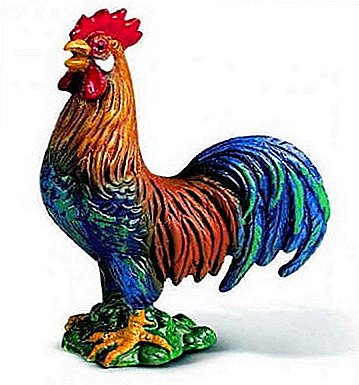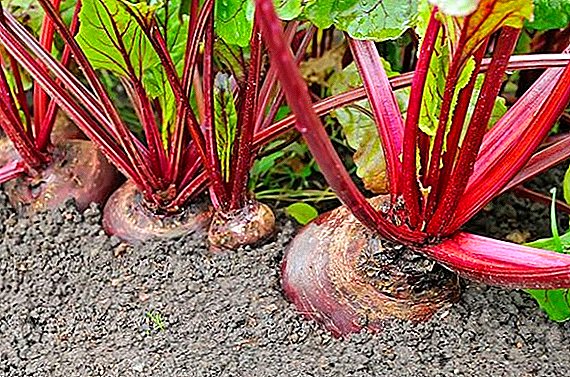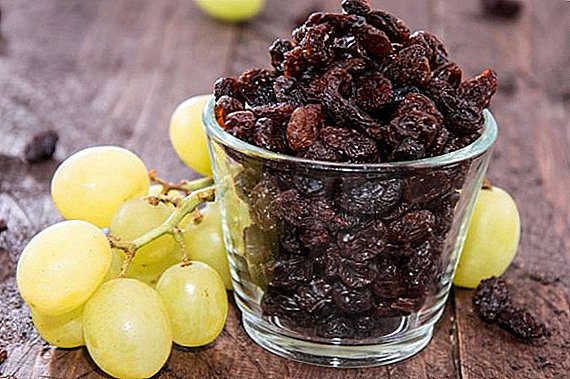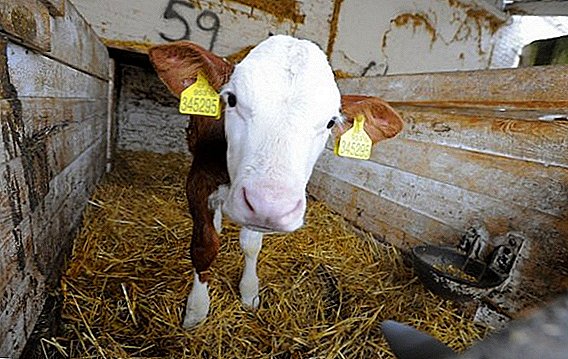 Owners of cattle sooner or later face the question of the need to slaughter animals.
Owners of cattle sooner or later face the question of the need to slaughter animals.
For these purposes, you can invite a person who owns the slaughter technique, give the cow to a factory, slaughterhouse, or, if the mind and conditions allow, to carry out the procedure yourself.
How to do it correctly, read in our article.
Proper slaughter of a cow at home
In order not to bring the animal torment and do without unnecessary trouble and problems, when slaughtering one should follow a certain technology. The killing procedure must be carried out after the cow has been examined by a veterinarian and has given permission.  He can give a refusal if he revealed signs of a disease in a cattle or if the animal was vaccinated several days before slaughter and the virus may still be contained in the meat.
He can give a refusal if he revealed signs of a disease in a cattle or if the animal was vaccinated several days before slaughter and the virus may still be contained in the meat.
For example, if vaccination against anthrax has been carried out, then a cow can be killed in order to get meat only after 2-3 weeks: during this time the meat will pose a threat to human health. And with the introduction of the antihelminthic vaccine, the cow will not be killed for at least another month.
Wait for the time required in the case of treatment with antibiotics.
The slaughter of cattle includes several stages:
- pre-slaughter preparation;
- stunning;
- bleeding;
- spinning;
- skinning;
- cooling.
Did you know? The most expensive beef in the world is from Japanese Wagyu cows. Due to the fact that the Japanese cherish their animals and feed them the best food, they give a very tender and tasty meat. The cost per 100 g reaches 50 euros.
Cow preparation
It is necessary to prepare the cow for slaughter one day before the procedure. They stop feeding her and drink a lot of warm water. A hunger strike, as well as frequent and abundant drinking, allow the animal to clear the gastrointestinal tract of excess fecal masses, which can later complicate skinning and carcass cutting.  Also, the animal will need to wash - rinse with water from a hose to wash off the dirt from the wool, which later gets on the meat.
Also, the animal will need to wash - rinse with water from a hose to wash off the dirt from the wool, which later gets on the meat.
All that is necessary for slaughtering — the place, the tools, the fixtures — must be prepared so that the cow does not see it. Experienced livestock breeders claim that she somehow begins to anticipate what should happen to her.
Therefore, quite often for some time before slaughter begins to behave aggressively and stubbornly.
For slaughter you need to prepare the following tools, tools and equipment:
- crossbar for hanging the carcass for the purpose of dressing it;
- hook;
- rope;
- a sharp knife or an ax;
- carcass knives;
- blood collection containers;
- a basin with warm water;
- towels;
- plastic film, which will be placed on the skin.
Did you know? In the early Neolithic period, the ancient people tamed wild oxen, a tour, zebu, etc., to obtain meat and milk. It is believed that for the first time the inhabitants of Altai, India and Western Asia have succeeded. Thus, it was the wild bull that became the ancestor of the domestic cow, familiar to the farmers today.
For slaughter will require a special place, away from the premises where other animals are kept. It should be well washed and disinfected.  In this place the cow is tied with ropes by the horns and neck. Then give her time to calm down. The slaughter can be started only when the cow is in a balanced state. Otherwise, it will come out of poor quality and will definitely affect the quality of the meat.
In this place the cow is tied with ropes by the horns and neck. Then give her time to calm down. The slaughter can be started only when the cow is in a balanced state. Otherwise, it will come out of poor quality and will definitely affect the quality of the meat.
After all, during stresses in the animal's organism, the consumption of nutrients increases and the production of lactic acid, which is a natural preservative, decreases. As a result, the meat will become less tasty and less stored.
It will also be helpful for you to familiarize yourself with the anatomy of a cow. And also find out how the stomach, heart, teeth, eyes, and udder are arranged in a cow.
Ways to stun
A tethered and calm animal will need to be stunned. Stunning will lead to the fact that the animal will temporarily lose consciousness, while its heart will work, and this will make it easier for the subsequent descent of blood. To stun a bull or a cow, there are several ways.
Hammer blow
This is the easiest and most ancient way. A slaughtering person must strike hard at the junction of the first cervical vertebra and the occipital bone.
If the blow is strong enough, the animal will fall on its front legs. After that, you will need to move on to the next stage of slaughter - bleeding.
Important! In order for the blow to be effective, it is necessary to choose a hammer weighing at least 2 kg.
In addition to the hammer, with this method you can use an ax, a sledgehammer, stylet. 
Current
Today, to stun most often used electric current. Electrical discharge temporarily paralyzes cattle.
To stun a young individual up to 1 year old will require an 80–90 V discharge for 3-5 seconds. To stun cattle by age from one year to three years, a voltage of 90-100 V is required, which affects the animal for 9-12 seconds. Older individuals are stunned by a 100–120-volt discharge, which should last 15–20 seconds.
Important! When conducting a stunning electric shock, a person should stand on a rubber mat.
The defeat of the nervous system of an animal with electric current as a method of its paralysis is increasingly being viewed as an obsolete method that must be abandoned. Experts say that when it is possible fractures of the spine, which lead to a deterioration of the presentation of the meat and the loss of its quality.
This carcass is not suitable for sale, and can only be used in sausage business. 
Pistol
A more modern and, if I may say so, humane method of paralysis of cattle is stunning with a pneumatic pistol. This is an expensive way that only slaughterhouses can use. With it, it is possible to stun 60 individuals in 1 hour.
Stun guns are different. They are selected depending on who will have to kill - a cow, a bull or a calf.
Important! Remember that stunning does not kill the animal, but only leads to a short-term loss of consciousness, and the cow can recover at any moment. Therefore, all further actions need to be done very quickly and clearly.
Exsanguination
After stunning, you need to cut the veins and artery in the neck. To do this, a large, sharp knife on the lower part of the neck makes a deep horizontal incision with a sharp movement. Next, the animal must quickly throw on the crossbar and hang vertically upside down.
Under the carcass substitute capacity, which will drain the blood. The exsanguination lasts about 10 minutes. Then you can start cutting.
Blood must be disposed of or left to feed poultry and animals. 
Cutting cow
Cutting the carcass is a very important step, because the quality of the skin and meat will depend on its proper performance.
When to get started
It is necessary to start cutting at the moment when blood stops flowing from the carcass. Bloodied places on the skin and meat should be washed off with a wet towel.
First, a cow or a bull is skinned, and then they go directly to the dressing.
Skinning
The process of skinning can be carried out using the following step-by-step instruction:
- First we cut the ears.
- Circular movement cut the skin around the lips and nostrils.
- Circular movements cut the skin around the horns.
- We proceed to the process of skinning, starting with the head area. First, remove the cervical incision to the lips.
- Make an incision between the skull and the cervical vertebra and separate the head from the body.
- The body is placed in a horizontal position on a previously prepared sterile film and in a circular motion we make an incision around the anus.
- The same manipulations are repeated around the legs.
- We make cuts on the inside of the limbs, starting from circular cuts.
- The lower parts of the hind legs are cut off at the hock.
- The lower parts of the front legs are cut along the carpal joints.
- Remove the skin from the legs, neck, sides, sternum.
- The removal process is completed in the area of the scrotum, udder and the remaining areas.
- Put the skinned skin on a clean oilcloth with a nap up, sprinkle it with salt and place it in a room with a cool temperature where the sun's rays do not penetrate. In a week, it will be ready for transport.

Carcass cutting scheme
After removing the skin, the carcass is ready for cutting.
The scheme of cutting a cow or a bull can be found in the picture: 
- We begin with the removal of internal organs. To do this, make a hole in the chest. Through it we take out the esophagus, which must first be bandaged so that its contents do not mess with the meat, and the intestines.
- Carefully, not to damage, remove the gallbladder.
- Separate udder.
- Separate the fat that covered the internal organsand put it in a separate container. You may need it for cooking various dishes.
- We chop the carcass with an ax into several large parts (see diagram).
Important! Internal organs and systems should be removed no later than 45 minutes after the cow was slaughtered. Otherwise, the carcass will harden and remove the insides will be a problem.
How does the slaughter of cattle in slaughterhouses (slaughterhouses)
The technology of slaughtering cattle at home and in meat processing plants is somewhat different. At the enterprises, many stages are automated, therefore they occur much faster, simpler and more qualitatively. Slaughter takes place in special workshops equipped with everything necessary. We suggest you briefly familiarize yourself with the process of slaughtering cows and bulls at slaughterhouses.
So, stunning produce most often with a current or pneumogun. Cows are driven to a special container, where they are stunned. Then they cut their throats and hang them by the leg to drain blood. The blood flows into special tanks, from where it is immediately taken for the production of sausage or other products. Then the skin is removed from the carcass.  Cutting is carried out by workers manually. As a rule, the whole process is produced by 4 people. First, they remove the internal organs. Then the carcass is washed out with a hose, dried and stigmatized. The carcass, the insides and the skin are examined by a veterinarian, after which they are sent to cold conditions.
Cutting is carried out by workers manually. As a rule, the whole process is produced by 4 people. First, they remove the internal organs. Then the carcass is washed out with a hose, dried and stigmatized. The carcass, the insides and the skin are examined by a veterinarian, after which they are sent to cold conditions.
Thus, when slaughtering cows and bulls, one should adhere to a certain technology. If you allow skills, strength and psyche, the slaughter is possible to produce at home. In the absence of these factors, you need to contact a specialist or give the cow to the slaughterhouse. It should be understood that even one wrong move can lead to the fact that the animal will die in terrible agony, and you will get poor-quality meat. Thus, experienced breeders can determine by the color of the beef whether the slaughter was done correctly - pale or too dark meat indicates that mistakes were made.












